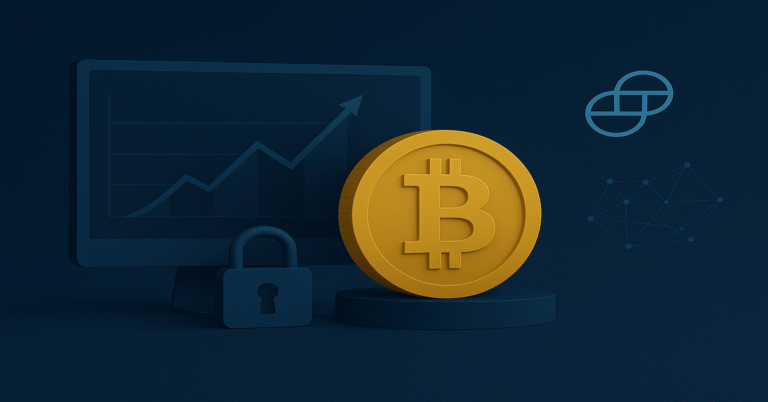
The financial world has undergone remarkable changes in the last decade, largely driven by cryptocurrency, blockchain innovation, and the increasing demand for digital assets that combine stability with flexibility. One of the most discussed elements in this evolving landscape is USDT, better known as Tether, a stablecoin pegged to the value of the U.S. dollar. Within this context, a specific extension of this stablecoin—referred to as USDTCCK—is drawing attention for its unique applications, technical framework, and role in secure digital transactions.
The keyword “USDTCCK” may sound highly technical, but it essentially highlights the integration of Tether (USDT) with CCK (Centralized Custodial Key) systems or similar frameworks that enhance secure custody, transaction verification, and compliance in digital finance. For many users, the idea behind USDTCCK is about combining the stability of a dollar-pegged digital currency with advanced security and custodial control.
In this detailed guide, we will explore USDTCCK in depth, covering what it is, why it matters, how it functions, its benefits, challenges, and its role in the global economy. The article will also present structured tables, explain comparisons with related tools, and provide practical insights for beginners, businesses, and institutions.
What is USDTCCK?
At its core, USDTCCK can be broken down into two parts:
- USDT (Tether): A stablecoin pegged to the U.S. dollar, designed to minimize volatility compared to cryptocurrencies like Bitcoin or Ethereum.
- CCK (Centralized Custodial Key or similar custodial protocols): A mechanism that ensures enhanced custody, compliance, and transaction management for digital assets.
Together, USDTCCK represents a secure, custody-enabled, stable digital currency that can be used for payments, remittances, settlements, or institutional finance. It is often viewed as a tool for merging stability (via USDT) with control and compliance (via custodial frameworks).
Why USDTCCK Matters in the Modern Economy
Cryptocurrencies face two major concerns: volatility and security. While USDT solves the volatility issue by pegging value to the U.S. dollar, custodial mechanisms like CCK solve the security and compliance side.
This makes USDTCCK relevant in several contexts:
- Stable Digital Payments: It enables businesses and individuals to transfer funds digitally without worrying about price fluctuations.
- Institutional Adoption: Custodial frameworks make digital assets more acceptable to financial institutions, which require security and compliance.
- Cross-Border Transactions: USDTCCK allows for low-cost, fast global payments compared to traditional banking.
- Risk Management: Helps organizations reduce risks associated with holding volatile cryptocurrencies.
Technical Architecture of USDTCCK
The architecture behind USDTCCK blends blockchain functionality with custodial oversight.
| Component | Function |
|---|---|
| Blockchain Layer | Provides transparent, immutable record of transactions. |
| USDT Pegging | Ensures each token represents approximately $1 USD. |
| Custodial Key (CCK) | Offers centralized oversight, enhanced security, and compliance tracking. |
| Smart Contracts | Automate transfers, settlements, and conditional payments. |
| Integration APIs | Allow businesses to integrate USDTCCK into platforms and applications. |
This hybrid structure makes it practical for both individuals and organizations.
Benefits of USDTCCK
The advantages of USDTCCK become clear when we compare it with traditional finance and non-custodial cryptocurrencies.
- Price Stability: USDT ensures that tokens maintain a near 1:1 value with USD.
- Enhanced Security: Custodial oversight adds an extra layer of protection.
- Compliance: Regulatory alignment is easier with custodial mechanisms.
- Transaction Speed: Transfers are faster compared to banking systems.
- Low Cost: Reduces fees for remittances and settlements.
- Global Accessibility: Anyone with internet access can participate.
- Scalability: Works well for retail, business, and institutional applications.
Challenges and Risks
Despite its benefits, USDTCCK also faces challenges:
- Centralization Concerns: Custodial keys may introduce central points of control.
- Regulatory Scrutiny: Governments may impose strict compliance requirements.
- Trust Issues: Users must trust custodians to safeguard assets.
- Technology Risks: Smart contract bugs or custodial breaches can create risks.
Comparison: USDTCCK vs Other Stablecoins
| Feature | USDTCCK | USDC | DAI |
|---|---|---|---|
| Pegging | USD-pegged via Tether | USD-pegged via Circle consortium | USD-pegged, decentralized mechanism |
| Custody | Custodial with CCK system | Regulated custodians | Decentralized collateral pools |
| Compliance | High, due to custodial oversight | Very high (Circle under U.S. laws) | Lower, relies on decentralized DAO |
| User Trust | Moderate (trust in custodians needed) | High (backed by audits) | Varies (trust in smart contracts) |
| Use Case | Secure, institutional payments | Business adoption, compliant finance | Decentralized finance (DeFi) |
Use Cases of USDTCCK
USDTCCK has a wide range of real-world applications.
- Cross-Border Remittances: Enables families and businesses to send money internationally at low cost.
- Institutional Settlements: Corporations use it to settle trade or supply chain payments quickly.
- E-commerce Payments: Online stores accept stablecoins to reduce payment delays.
- Crypto Exchanges: Acts as a stable pair for trading volatile assets.
- DeFi Integration: Used in lending, staking, and yield farming platforms.
- Payroll Solutions: Companies pay employees globally without exchange rate worries.
Practical Example: How USDTCCK Works in a Transaction
Imagine a company in Largo, Florida, needs to pay a supplier in Manila, Philippines. Traditionally, this could take days and involve high fees. With USDTCCK:
- The company converts $10,000 into USDTCCK.
- Within minutes, the supplier receives $10,000 equivalent in USDTCCK.
- The supplier can either keep it in digital form or convert it to local currency.
This speed and efficiency illustrate why digital stable currencies are gaining traction.
Risk Management for Users
For individuals and organizations using USDTCCK, managing risks is essential. Some strategies include:
- Diversification: Don’t hold all funds in one digital asset.
- Secure Storage: Use trusted custodial wallets or cold storage options.
- Compliance: Ensure transactions follow local laws to avoid penalties.
- Monitoring: Regularly review custodial reports for transparency.
The Future of USDTCCK
As digital finance continues to evolve, USDTCCK may become even more relevant. Some expected developments include:
- Stronger Regulations: Governments will likely formalize rules for custodial stablecoins.
- Institutional Adoption: Banks and corporations may adopt it for settlements.
- Integration with CBDCs: Central Bank Digital Currencies could integrate with custodial stablecoins.
- Improved Technology: Enhanced smart contracts will make transactions safer and more efficient.
Conclusion
USDTCCK represents a new frontier in digital finance, blending the stability of Tether (USDT) with the security and compliance of custodial systems (CCK). It provides a reliable solution for individuals, businesses, and institutions seeking fast, secure, and global payment methods without the volatility of traditional cryptocurrencies. While challenges remain in terms of regulation and centralization, the opportunities outweigh the risks, making USDTCCK a promising tool in the ongoing evolution of financial systems.
For the everyday user, USDTCCK offers a bridge between the traditional dollar and the digital future. For institutions, it represents efficiency, compliance, and scalability. In short, it stands as a symbol of how far digital finance has come—and how much farther it will go.
FAQs
1. What is USDTCCK?
It is a stable digital currency that combines USDT’s dollar-pegging with custodial key systems for enhanced security and compliance.
2. How does USDTCCK differ from USDT?
USDTCCK adds custodial oversight to regular USDT, offering more secure and compliant transactions.
3. Is USDTCCK safe to use?
Yes, it provides enhanced safety through custodial mechanisms, though users must still follow best security practices.
4. Can businesses adopt USDTCCK for payments?
Absolutely. It allows fast, low-cost, global settlements while maintaining value stability.
5. What is the future of USDTCCK?
It may integrate with CBDCs, attract institutional adoption, and benefit from stricter but clearer global regulations.





